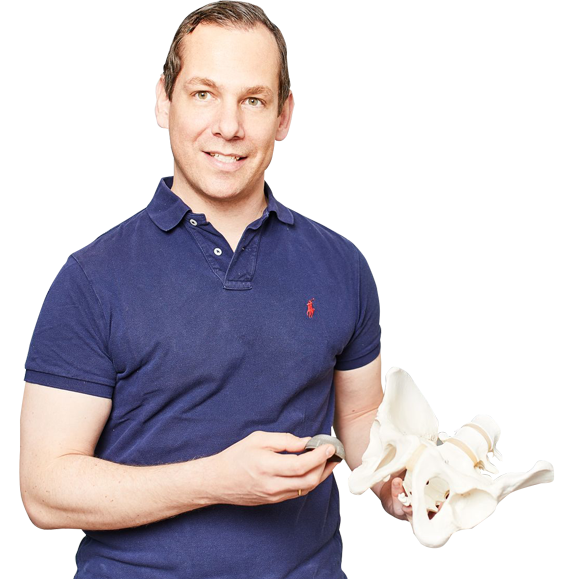
Total hip replacement
Arthritis is the most common joint disease in adulthood. Along with the knee joint, the hip joint is the joint in the human body most frequently affected by it.

In his surgery, Dr. Klotz offers a wide range of conservative and operative treatments. In the case of advanced arthritis and exhausted conservative treatment procedures a total hip replacement usually represents the treatment of choice.
Should an operation be necessary for you, this could take place in the orthopaedic and traumatology clinic of the Kepler Universitätsklinikums Linz. This is one of the most important places for joint replacement in Germany, Austria and Switzerland with over 1000 implanted joint replacements per year. Annually the Kepler University Clinic is certified as a joint replacement center by Endocert. This designation and certification is awarded for high surgical expertise of those carrying out the operations and other quality criteria to be met.
The joint replacement center at Kepler University Hospital offers you the following advantages:
- Optimised processes to improve outcomes & reduce complications
- Standardised treatment protocols
- Close interdisciplinary treatment by the groups of expert groups
- Creation of an individual treatment procedure including planning the date and type of discharge. If required, an information event with patient instruction before the operation.
- Clinical improvements
- Early functional treatment through improved pain management concepts
- Optimised surgical procedures
- Measures for promoting fast recuperation in the Rapid Recovery programme
- Anonymised data capture for continuous evaluation and improvement
- Analysis of patient satisfaction, functionality and long-term results
- Identification, recording and analysis of undesired events for continual optimisation
Total Hip Replacement
When is a total hip replacement necessary?
A total hip replacement is necessary where there is advanced hip arthritis (Coxarthrosis LINK) and other diseases that destroy the hip joint. Together with severe pain, hip arthritis leads to restriction of mobility and gait. Hip arthritis is the most common form of arthritis.
How is a total hip replacement implanted?
The implantation of a new hip joint is a routine operation today. Nonetheless, the operation requires great experience on the part of the surgeon due to the many types of prosthesis types, surgical materials and surgical techniques. The aim is a hip prosthesis that corresponds to the patients’ requirements.
Dr. Klotz only uses implants with excellent long-term results.
The type of hip wear and tear, age and the general state of health of the patient are decisive in the choice of implant. The hip prothesis is either cemented or anchored without cement depending on the quality of the bone.
What surgical techniques are there?
Which model of prosthesis and what surgical technique is to be used is individually decided patient by patient.
Minimally Invasive Operation (Keyhole Surgery)
In the minimally invasive operation technique, the gaps between the muscles are used to reach the hip joint. The artificial hip can be inserted precisely through an incision in the skin of around 8 – 11 cm, without cutting through muscles and then stitching them back together. The minimally invasive access which is gentle on muscles enables faster rehabilitation. However, this method is not suitable for every patient. A conventional surgical technique is better for obese or very muscular patients.
Conventional Open Surgery
If a minimally invasive operation is not possible for you, an open muscle-protective operation is performed. In this, a somewhat larger incision is made in the upper thigh. Only rarely are tendons and muscle masses cut during this. The aim of every primary operation is to use minimally invasive and muscle-protecting access to enable you to re-establish joint function as quickly as possible.
Replacement Operation
If a total hip replacement needs to be partially or completely exchanged, this is called a revision operation. Due to the rising life expectancy, the number of revision operations is rising. However, it must be remembered that the implant survival, i.e., the durability, of the primary prostheses is constantly improving due to improved materials and the revision surgeries thus do not need to be carried out until a later point. The intervention will become necessary, for example, if the joint loosens due to wear and tear. For more than 90 per cent of patients, however, this is only the case after 20 years following the primary operation. Replacement of an endoprosthesis is a complex area and should only be performed by a specialist with many years of experience. Dr. Klotz is an experienced surgeon of the joint replacement center and regularly carries out operations to replace artificial hips, knees and ankles.
What Models of Hip Endoprostheses are available?
Since total hip replacments are the most frequently used endoprostheses, research and development in this area is intensive. Total hips vary in respect of material, surface quality, design and anchoring options.
The materials range from ceramics through plastics to metal alloys.
The aim is always to find the best model for the patient. Dr. Klotz will advise you based on your personal profile and X-ray images. The Kepler University Clinic is the 2nd biggest hospital in all Austria and endoprothestic center of maximum provision. Various implants are available to be able to provide as best possible for every patient appropriate to their individual situation. There is also the possibility of manufacturing implants individually in exceptional cases.
What do you have to think about after a hip joint operation?
Generally, the hospital stay after fitting of a hip endoprosthesis lasts 5 days. Your rehabilitation programme can start as soon as the first day after the operation. Physiotherapists will give you precise instructions for that. After three to five days, there is another x-ray check. The wound will be completely healed after 10 to 14 days.
Young and active patients will benefit from the concept of the so-called Rapid Recoveryprogramme. This concept aims at the fastest rehabilitation possible, so that even on the day of the operation, full load bearing and the first exercise treatments with the physiotherapist colleagues can start with optimised pain reduction procedures.
The aim of any hip prosthesis is to give you long-term freedom from pain and a good function so that you get your quality of life back. We adapt the measures necessary for that to every individual patient.
Dr. Klotz is one of the most experienced specialists in the field of joint replacement.
Please get in touch. We would love to hear from you!
YOU CAN FIND ME HERE
Along with my work as Senior Consultant at the University Hospital in Linz, I run my “Wahlarzt” [elective doctor] surgeries in Linz and Vienna. I will be pleased to give you comprehensive advice there.
Marienkrankenhaus Soest
Chefarzt Orthopädie & Unfallchirurgie
schedule appointment:



